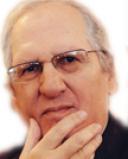Anger
Dangerous States of Mind
Forensic psychologist Dr. Stephen Diamond discusses dangerous states of mind.
Posted April 4, 2008
Last Saturday night, forty-one-year-old Mark Castillo drowned his three children, ages 2, 4 and 6, in the bathtub of a Baltimore hotel room. He and his estranged wife, pediatrician Amy Castillo, were reportedly engaged in a bitter and protracted child custody battle, a sadly not uncommon occurrence. After deliberately drowning each of his kids during his unsupervised visitation with them, Castillo, according to reporters, superficially stabbed himself in the neck several times with a steak knife and swallowed approximately one-hundred Motrin in a half-hearted suicide attempt. He awoke the following day and informed the hotel staff what had happened, allegedly telling paramedics at the scene, "I know what I did was bad. I did it. I drowned them." Incredulous neighbors and acquaintances of the Castillos are quoted as describing him as a very polite, nice person, a "wonderful father" who "loved his children."
According to numerous news sources, Mr. Castillo had been diagnosed two years ago as suffering from a mood disorder, possibly bipolar disorder, as well as narcissistic personality disorder. He made at least one prior suicide attempt, became itinerant, residing in his car, was involuntarily psychiatrically hospitalized, and threatened to hurt his wife by killing their children. In 2006, the year he and his wife of eight years separated, he had allegedly gone so far at one point as to purchase ant poison, duct tape, and a utility knife for some suicidal and/or homicidal plan. Castillo had evidently been in psychotherapy of some sort in 2007, leading two therapists to opine that he posed a low risk of dangerousness to his wife and children. Amy Castillo obtained a restraining order against her husband in 2006 to protect her and the kids, but it was discontinued in January 2007 due to a perceived lack of supporting evidence of abuse or dangerousness.
U.S. Department of Justice statistics indicate that between 1976 and 1997, nearly 11,000 children were murdered by parents or step-parents in this country. Just days earlier, in an upper-middle-class Louisville, Kentucky suburb, a thirty-seven-year-old widowed university student was charged with killing her two children, a boy and a girl, ages 10 and 14. They had, according to police, been shot to death in their beds while fast asleep. According to interviews, the woman was described by neighbors as a "good mother." Readers may remember the high-profile cases of Susan Smith and Andrea Yates. Why would any parent murder his or her own offspring? Motivations vary, from self-interest, to spite, to madness.
Drawing on my experience as a forensic psychologist, this tragic case of paternal filicide (the killing of one's own children) raises several potential issues: First, what is the defendant's current mental state? Is he capable of comprehending the nature of the charges and proceedings against him? Can he cooperate rationally with his defense counsel? Or is he so severely mentally ill that he is not competent to stand trial at this time. If he is competent to stand trial, the next question has to do with his mental state at the time of the murders. Was he psychotic or manic or profoundly depressed? Was he able to appreciate the nature and quality of his actions? Could he differentiate between right and wrong? Did he know that what he was doing was illegal, immoral and evil? If not, he could, depending on Maryland law, possibly be found (like Andrea Yates, who similarly drowned her five children in Texas) not guilty by reason of insanity (NGRI) and confined indefinitely to a psychiatric hospital rather than prison.
Whether he and his attorney will decide to invoke this difficult-to-win-defense (fewer than one-in-four insanity defenses succeed) remains to be seen, especially in light of his alleged incriminating confession to paramedics the day after the drownings, in which he supposedly said "I know what I did was bad." This seems to indicate consciousness of guilt and an awareness of the evil or immoral nature of his act. But it could conceivably be legally argued that this awareness was only post-episodic, being stated more than eighteen hours after the incident occurred, and, therefore, not necessarily an accurate reflection of his state of mind at the exact time of the offense.
Judging by news stories and what we know of similarly contentious child custody cases, Mr. Castillo may be an extremely self-centered, angry and controlling individual who was ultimately unable to psychologically cope with the disintegration of his marriage and family (his divorce had been recently finalized). Narcissistic personality disorder, one of his supposed diagnoses, is defined by the DSM-IV-TR as "a pervasive pattern of grandiosity (in fantasy or behavior), need for admiration, and lack of empathy. . . " and commonly includes a sense of entitlement, interpersonal exploitation, and lack of empathy for others. For the narcissist, it's all about me, my needs, what I want. Such pathological narcissism, grandiosity or excessive selfishness is evident from early adulthood, and can be seen as a pervasive characterological defense against deep feelings of inferiority, helplessness, sadness, and unlovability stemming from certain infantile and childhood needs having not been adequately met. When this inflated persona is inevitably deflated by stressful life events such as divorce, rejection, abandonment, failure and loss, narcissistic rage is triggered, along with other long-buried emotions. The desire for revenge, retaliation, and the compulsive need to repay the hurt no matter what it takes is characteristic of narcissistic rage. These overwhelming emotional reactions are sometimes so severe as to engender or exacerbate what we diagnostically define as a major depressive episode, mania or even psychosis, causing significant impairment of perception, rationality, judgment and impulse control. In such debilitating, disorienting and dangerous states of mind, anything can happen.
Could this horrific crime have been prevented? Perhaps. While violent behavior is far from predictable by psychologists, the alarming history of circumstances, signs, symptoms, and behaviors preceding the murders certainly would cause most seasoned clinicians serious concern. Should he have had unsupervised visitation? Pseudoinnocence--the inability or refusal to recognize and anticipate the potentiality for evil deeds--is dangerous, especially in mental health professionals. And psychotherapists need to focus specifically on more effectively dealing with anger and rage in treatment. But hindsight is always 20-20. The fundamental philosophical and legal question now is whether a person who commits such an evil act as this--even if proven to have been in the grips of tumultuous emotional turmoil --should be held accountable by society for his or her bad behavior. That may be for a jury to decide.


